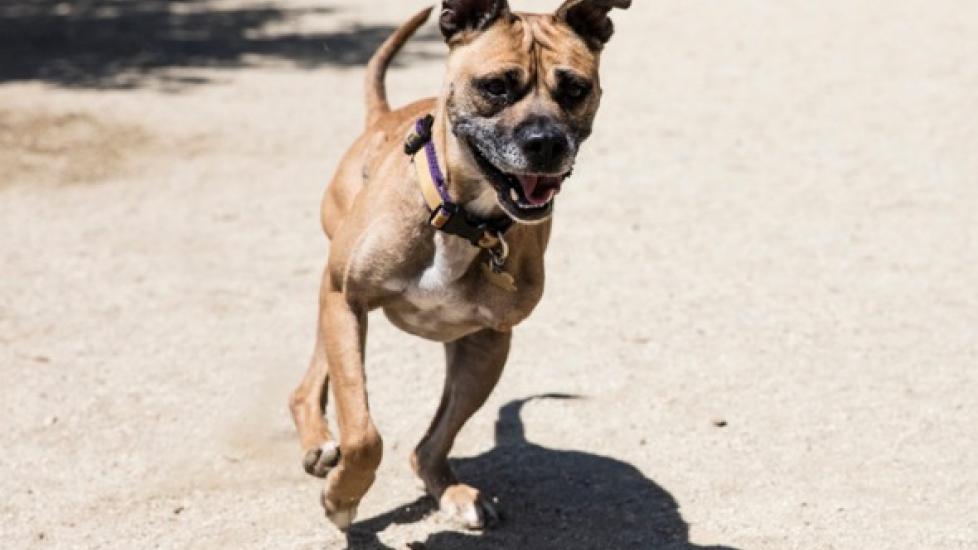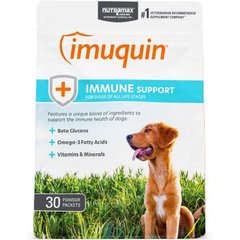Caring for Three-Legged Dogs and Cats, aka “Tripawds”
Reviewed for accuracy on May 10, 2019 by Dr. Jennifer Coates, DVM
As much as we feel our heartstrings tug when encountering a tripod pet, our three-legged dog and cat friends tend to be more nonchalant.
“For the most part, in dealing with three-legged pets, I have found that the only one that knows they have a missing limb is you,” says Dr. Jeff Werber, an Emmy Award-winning veterinarian and author based in Los Angeles.
Even so, potential adopters may wonder if a three-legged dog or cat would require them to spend more on vet bills or provide more extensive care.
Whether you have a three-legged pet—or “tripawd,” as some pet parents refer to them—or you are looking to adopt a tripod dog or cat, here’s what you can expect in terms of care and how you can help promote their health and well-being.
Veterinary Care for Three-Legged Dogs and Cats
In general, tripod dogs and cats don’t require special veterinary care after the initial amputation and rehabilitation. This usually comes as a surprise to worried pet parents, says Dr. Werber.
“There aren’t notable veterinary expenses related to the care of a tripod pet,” says Dr. Werber. “The biggest issue is usually the client, not the pet. Tripod dogs and cats usually do very well.”
A possible exception, notes veterinarian and published author Dr. Jennifer Coates, is that “three-legged pets may be at increased risk of osteoarthritis and other joint problems as they age due to alterations in their posture and movement.” But she adds, “Thankfully, there’s a lot that owners can do to prevent and/or manage conditions like these.”
Vet Recommended Health Support
- Nutramax Imuquin Immune Support Powder Immune Supplement for Dogs, 30 count$24.99Chewy Price
- Purina Pro Plan Veterinary Diets FortiFlora Powder Probiotic Digestive Supplement for Dogs, 30 count$30.99Chewy Price
- Purina Pro Plan Adult Sensitive Skin & Stomach Salmon & Rice Formula Dry Dog Food, 16-lb bag$54.48Chewy Price
- Virbac Epi-Otic Advanced Ear Cleaner for Dogs & Cats, 4-fl oz bottle$12.34Chewy Price
Health Considerations for Tripod Dogs and Cats
Although you might not have extra vet bills when you adopt three-legged pets, here are some things you can do to ensure their health and comfort.
Keeping Larger Breeds Comfortable
The size and anatomy of the individual pet can create certain issues. While smaller pets tend to do well, larger breeds may have a more difficult time supporting themselves on three limbs, explains Dr. Werber.
In particular, dogs with short legs and long torsos may experience back problems. “For dogs such as Dachshunds, who are prone to spine problems, the lack of a limb may put undue strain on the back,” he says.
Also, some three-legged pets will develop callouses when lying down due to an uneven distribution of weight, notes Dr. Werber. Providing extra-soft bedding can help.
Promoting Joint Health in Three-Legged Pets
When it comes to joint health, pet parents with three-legged dogs and cats should be extra-vigilant.
“While most physical concerns for tri-legged animals are the same, joint conditions are even more important than in a four-legged pet,” says Dr. Amanda Landis-Hannah, DVM, the senior manager of veterinary outreach for PetSmart Charities. “Joint disease such as osteoarthritis can be debilitating.”
Being proactive can delay the onset of common joint problems in dogs, says Dr. Werber. “Give your dog supplements such as glucosamine, chondroitin and MSM to support joint health,” he says. Similar cat supplements are available that are specifically designed for cats.
Your veterinarian may also suggest a fish oil supplement. Omega-3 fatty acids, which are found in fish oil, can decrease osteoarthritis symptoms in dogs and probably cats as well, although there has not been must research done specifically in cats.
Weight Management for Pets With Disabilities
Maintaining a healthy weight is also key to maintaining joint health.
“For any dog, regardless of the size, it is preferable to keep him or her on the lean side, since more weight is more strain,” says Dr. Werber.
More weight means more pressure on joints, which are already compromised in three-legged dogs and cats, cautions Dr. Landis-Hannah. “Obesity can cause a number secondary health issues and may decrease the quality or length of life,” she says. “It is important to keep your pet trim.”
Dr. Coates adds, “Excess body fat also promotes inflammation in the body, which is the last thing a dog or cat that is at risk for inflammatory conditions like osteoarthritis needs.”
Exercising Tripod Dogs and Cats
Pets with three legs are perfectly capable of exercising, says Dr. Werber, and they should be encouraged to do so.
“It is important for a three-legged pet to stay toned and to have controlled muscle tone,” says Dr. Werber. Strong muscles help support joints in the back or remaining limbs that may be under extra strain.
Tripod pets may become tired more quickly than their four-legged peers, says Dr. Werber. Pay close attention to your pet’s body language, and provide plenty of opportunities to rest during walks and playtime.
For pets with greatly reduced mobility—such as senior tripods or animals with only two limbs— specially designed tripod dog accessories may be helpful for exercise, says Dr. Werber.
Helpful Gear and Home Modifications for Three-legged Cats and Dogs
Many three-legged cats and dogs can navigate their environment just fine. However, there are things you can do to support mobility and to make your abode more accessible.
“One home modification to consider is traction. When pets have good traction, they are less likely to slip,” says Dr. Landis-Hannah. “Consider products to increase traction.”
No-slip dog socks and booties can help provide traction on hard floors. As your tripod pet ages, it may be wise to install carpets and runners throughout the home for extra traction and padding, notes Dr. Landis-Hannah.
For pets who have trouble jumping, cat or dog ramps can allow them to easily access their favorite spots on the couch or windowsill.
The Pet Gear step and ramp combination or the Pet Gear travel lite bi-fold pet ramp are great options for giving your three-legged companion a paw up in your home or your car.
Wheelchairs for dogs, like the HandicappedPets Small Dog Wheelchair can help pets navigate any terrain, from sidewalks to park trails to beaches. Dog and cat strollers, like the Pet Gear Happy Trails No-Zip Pet Stroller, can help your pet enjoy a long evening walk.
With some slight home modifications, mobility gear and routine veterinary care, tripod pets can enjoy the same quality of life as their four-legged peers.
By: Monica Weymouth
Featured Image: iStock.com/amandafoundation.org




